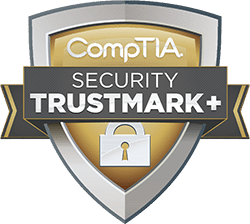When is a Simple Data Backup Not Enough?
You know you need data backup, but when do you need a business continuity solution?
If you’ve been paying attention to the news, you’ll know that massive global ransomware attacks are only growing in scale and frequency. These attacks and other threats and accidents that cripple, ransom, or destroy organizations’ data are a convincing argument for a solid backup solution.
Restoring from a data backup is often the only reliable way to recover from these events. Even smaller organizations and businesses know that they need some sort of backup solution now.
But when do you need more than a regular data backup?
Types of Data Backup
Roughly speaking, you can think of data backup solutions in two flavors.
The first type backs up your data (offsite, onsite, and/or in the cloud) and lets you restore it.
The second type does this too, but also provides hardware and software to recover and run your servers or infrastructure in the case of much more catastrophic events. This second type is called a business continuity and disaster recovery solution (BCDR).
With destructive events also in the news recently (hurricanes, wildfires, flooding, and earthquakes), it’s now time to look beyond the basic backup and consider a solution that will help you recover not just your data but also your infrastructure.
If a tornado destroys your physical office and your servers, your data may be safe, but you may not have machines to run on. A simple recovery of your files and folders isn’t enough.
If your server fails unexpectedly on a Friday afternoon, how quickly will you be able to order a new server, get it delivered and set up, and then restore data to it and get your critical programs running again? It could take days.
Backing up your data is not negotiable, but how you back it up is.
Do You Need a Business Continuity Solution?
You’ll know whether you need a business continuity solution when you consider two key questions of disaster planning:
- How quickly do you need your data recovered? (This is your Recovery Time Objective, or RTO.)
- What is the maximum period of time you can afford to lose data from? (This is your Recovery Point Objective, or RPO.)
Say, for example, that your answers are
- We need our data recovered within 4 hours to minimize business and productivity loss.
- We can’t afford to lose more than a 2-hour chunk of data.
This is a high enough demand for availability and uptime that you need a business continuity solution.
If you lose your server and have to wait a few business days to get a new one ordered and setup, you’ll be hurting because you’ve far exceeded your Recovery Time Objective.
How Does a Business Continuity Solution Help?
A business continuity (BCDR) solution will provide a way to failover and spin up your lost system.
It can either do this on a physical on-site backup device or virtualized in the cloud. Instead of waiting days to recover a key piece of hardware, you can be up and running again in hours.
If you’re considering a data backup solution with a storage device anyway (such as a NAS), it’s worthwhile to spend a little more to beef up the hardware so you can virtualize and recover to it.
Business continuity solutions are flexible and customizable to meet your RTO, RPO, compliance, and storage space needs.
Taking Care of Your Data Is a Number One Priority Now
With so many threats to your data, whether it’s hackers or natural disasters, it’s a good idea to look beyond basic data backup and consider your disaster recovery planning.
IT staff and business owners alike need to be involved in this planning, to determine how the right backup and recovery solution can meet your business objectives.








